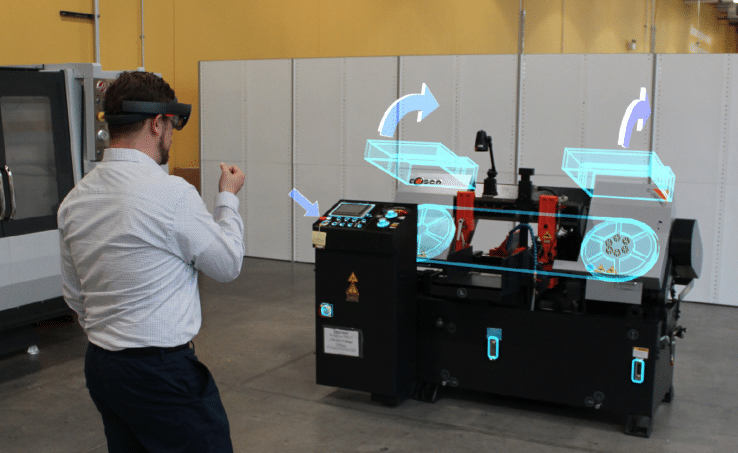
Enterprise AR and VR apps will drive greater value than their consumer-geared counterparts. This is a premise we’ve discussed, but is more importantly one held by Presence Capital managing partner Amitt Mahajan.
“For us there are clearer benefits in the enterprise,” Mahajan told ARtillry. “You can really model out what [AR & VR] mean for business, or how much it’s going to affect their bottom line and what that means in terms of a payback period for hardware investments.”
Presence Capital is among a short list of venture firms blitzing AR and VR as part of a central and defining investment thesis. In just two years, the seed-stage fund has invested in 33 VR and AR companies. And 27 of those are enterprise-focused according to Mahajan.
The firm doesn’t categorically preclude consumer-geared investments, like VR gaming, but it does raise the bar for them. In other words, because they lack the desired enterprise-focus, consumer AR & VR apps need to have a prevailing counterbalance, like a rock-star entrepreneur.
“All of our entrepreneurs are great but on the consumer side, our bar is higher,” said Mahajan. “There are very few cases when we say ‘We think gaming and VR are going to be big, so lets invest in it.’ It’s much more like ‘This is a phenomenal person, let’s back them.’”

Transforming Work
So what makes enterprise so central to Presence Capital’s investment thesis? It’s several factors we’ve examined, such as clearer ROI in areas like manufacturing (think: reduced assembly time, greater output, etc.). But it’s also the much larger vision of transforming work.
“I have this thesis that we can help people take on new jobs, even ones they have no training for,” said Mahajan in reference to portfolio company Scope AR. “The idea that you don’t need knowledge to perform in a given role is pretty powerful.”
Another key advantage for enterprise AR and VR is less buyer resistance. Besides price, AR and VR’s biggest consumer adoption barrier is style, especially when asking someone to put something on their face (notwithstanding mobile AR). But that’s not an issue at work.
“Almost all of the reasons to not adopt these things as a consumer go away in the enterprise,” said Mahajan. “If you make an employee more effective, or you make it so that they are able to perform a job at all, the form factor does not matter. People will put that thing on.”
Looking forward, Mahajan believes we’ll see a trend towards specialization in enterprise AR. As AR becomes more recognized and demanded by enterprises, the market size will justify that verticalization. And the technology could naturally drive towards specialization as AR matures.

Heavy VR
Despite an enterprise focus there’s still opportunity for consumer apps, but it should be divided between VR and AR. With VR, the high end of the market (“Tier-1” in our analysis) is where most of the industry is excited, but where Mahajan is relatively bearish due to adoption barriers.
“I think it’s the equivalent of enterprise-level desktop,” he said. “PCs were a big thing but the number of people running high-end workstations were pretty small. If high-end VR has a use case that’s mass market, it will be a B2B use case. I think it’s too cumbersome.”
This could change in the long term as price comes down and capability improves to reach the 100-million “magic number” for consumer ubiquity. But Mahajan projects that mobile VR will catch up to high-end VR in capability, before high end VR comes down to mobile VR in price.
ARKitchen Sink
As for consumer AR, Mahajan is cautiously optimistic, especially in the area everyone is excited about: Mobile AR. Things like ARkit will advance the industry, but being on iPhones means that ARkit apps could face the same friction and usage challenges that have plagued apps for years.
“You effectively have all the same problems that a mobile app has,” he said. “You have to convince someone to download it, [and] convince them to come back every day. All of the friction involved to get to that experience is still pretty high.”
His proposed solution is centralized ARkit functionality at the OS level, which then hooks into disparate apps. This would make it a sort of “lite” app experience a la Google Instant Apps or deep linking. In iOS terms, that could function like Wallet or Spotlight Search.
“There could be a single app at the OS level that other apps can then add functionality to,” said Mahajan, “similar to the way that Spotlight is a single app that exists as part of iOS, but then apps can expose content they want within Spotlight. They could do something similar with AR.”

Disclosure: ARtillry has no financial stake in the companies mentioned in this post, nor received payment for its production. Disclosure and ethics policy can be seen here.
Header image credit: Presence Capital
